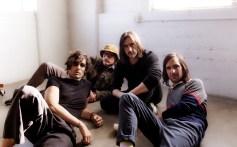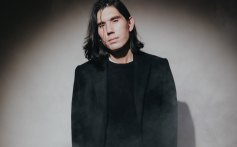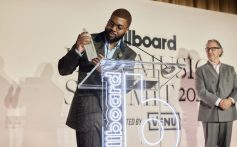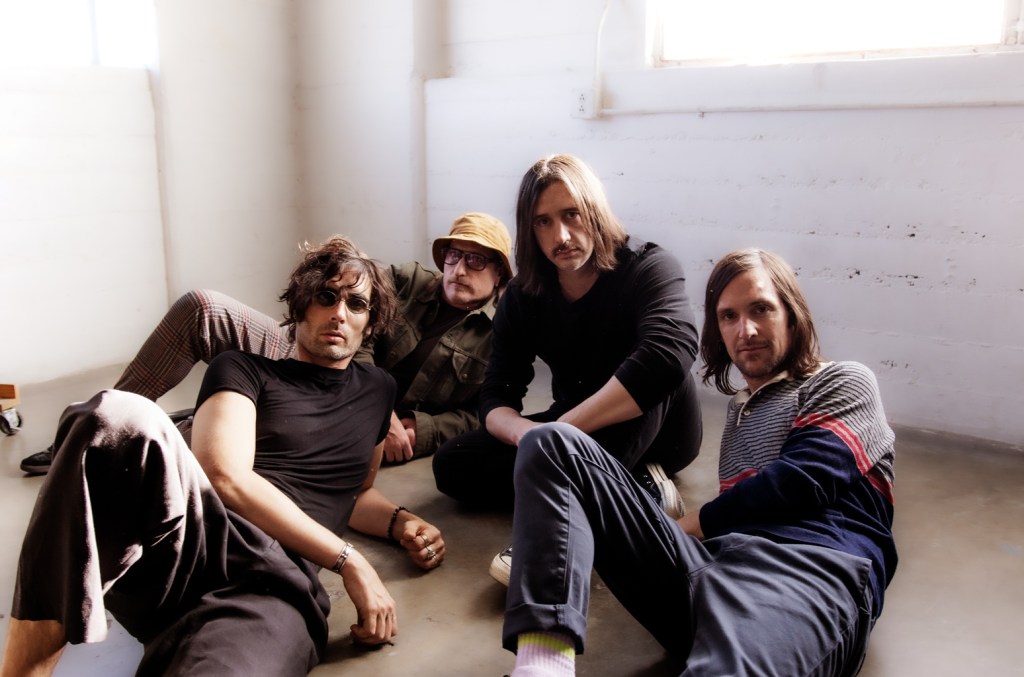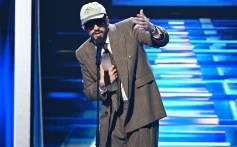Touring
Page: 4
Trending on Billboard
Yungblud is taking a break from the road for the remainder of 2025.
On Saturday (Nov. 15), the 28-year-old British singer took to social media to announce that his doctor has ordered him to cancel all of his concerts for the rest of the year.
“This week when I got home off the road, and went to have some tests done (like I usually do) and my voice and blood tests have raised some concerns,” Yungblud wrote on his Instagram Story. “It is in my nature to run and run until I run myself into the ground without giving a f—k about anything apart from the music and you guys but this time I’ve been told I have to take it seriously and can’t f—k around.”
The canceled shows from his Idols World Tour include stops in Philadelphia (Nov. 19), Cleveland (Nov. 23), and Washington, D.C. (Nov. 25–26), as well as dates in Mexico City and other locations across Latin America.
Yungblud noted that all U.S. tickets will be refunded, and fans who provide an address will receive “a gift.”
“My heart is broken,” the Doncaster-born musician added. “I don’t want (to) do any lasting damage to myself, we are on a journey that I want to last forever. I understand that some of you will be frustrated. I just want you to know this is so hard for me to do but I promise I will make it up to you.”
The cancellations come roughly two months after Yungblud released his collaboration with Aerosmith, “My Only Angel,” which debuted at No. 1 on Billboard’s Hot Hard Rock Songs chart in September. The track will appear on a five-song collaborative EP, One More Time, set to drop on Nov. 21. The project marks Aerosmith’s first new material since their 2012 album, Music From Another Dimension!
Yungblud released his fourth studio album, Idols, in June, which topped the U.K. Albums Chart and reached No. 15 on the Billboard‘s Top Rock & Alternative Albums chart.
As of press time, Yungblud was still planning to resume his Idols tour in January 2026 with an Australian leg, followed by a U.K. run in April. He will then embark on a North American amphitheater tour next summer.
Trending on Billboard
Joe Morrison may spend his days working as a personal injury lawyer at law firm Mullen & Mullen, but by night, he’s an avid music fan hoping to protect the live music scene he has supported and nourished for decades.
Together, Morrison, his partner Shane Mullen and Dallas-based production manager Corey Pond have launched the JAMBALOO Music Prize, offering one artist or group a $20,000 check along with professional recording time, promotional support and industry connections in North Texas. The prize represents the latest expansion of the firm’s JAMBALOO Festival, which debuted last year with 25 free shows across different venues in and around Dallas and Fort Worth.
Related
The competition is open to any artist or band with more than 50% of permanent members residing in the Dallas-Fort Worth metro area; artists can participate by submitting an album with seven or more songs via Bandcamp, Spotify, Apple Music or Tidal. Fifteen anonymous judges will evaluate the submissions and select 10 semifinalists who will compete to become one of three finalists. The winner will be chosen through a weighted vote by a panel of experts, as well as a vote by music fans.
“We didn’t want it to be a popularity contest, which is what sometimes these things can turn into, but we did want there to be an element of public voting, because success and popularity do matter,” Pond explains.
Three finalists will perform on June 6 alongside a to-be-determined national headliner, with all tickets free to the public. The June showcase will take place at Longhorn Ballroom, a historic Dallas venue once managed by Jack Ruby, infamous for gunning down Lee Harvey Oswald after Oswald shot and killed U.S. President John F. Kennedy near Dallas’ Dealey Plaza. The Longhorn was reopened by Texas promoter Edwin Cabaniss and Kessler Presents in spring 2023 after a multimillion-dollar renovation that included a new 6,500-capacity outdoor amphitheater.
Related
Besides the $20,000 cash prize, the winner will also win a recording session at Dallas’ Luminous Sound studio with four-time Grammy winner Tre Nagella, as well as featured placement at Josey Records, one of the nation’s largest record stores; a live session recorded at NPR affiliate KXT radio; and an email promotion to 650,000 music fans.
“For a local artist, that [money] could fund an entire new album, that could fund the start of a tour,” says Nagella. “This isn’t like a record deal where they’re beholden to someone — they’re free to use it however they want to use it.”
Mullen & Mullen is also hosting a separate $20,000 venue prize, which was launched after the Fort Worth Music Office reached out about The Cicada, a venue facing closure. The venue prize will become an annual summer competition for independently owned, locally operated music spaces.
“We were looking for a way to kind of give back to the community, but to do it in a fun and unique way,” said Morrison, noting that the firm has invested more than $500,000 in the music initiative so far. “As a personal injury lawyer, who the hell wants to interact with me on social media? It felt better if we could give back in an authentic way where people just see us in a different light.”
Related
The JAMBALOO Music Prize is part of a broader vision for the Mullen & Mullen Music Project, which aims to support the North Texas music scene year-round rather than through a single annual event. Plans include pop-up shows, educational panels and industry mixers modeled after South by Southwest’s programming.
Last year’s inaugural JAMBALOO Festival featured notable performances, including a set by rising indie artist MJ Lenderman. The festival is strategically scheduled in February, traditionally a slow period for venues and artists.
“Let’s try to take a time of the year that’s traditionally bad for the industry and for artists, and turn it on its head a little bit,” Morrison says.
Dallas-based artists can submit their work at JAMBALOO.live.
Trending on Billboard Drake quietly parted ways with the booking agent he shared with longtime rival Kendrick Lamar earlier this year, Billboard has learned, in a move largely kept quiet to avoid media scrutiny. One source tells Billboard that Drake and former longtime agent Brent Smith of Wasserman Music have not worked together for most, […]

Trending on Billboard
Music fans would choose a concert over having sex if it meant seeing their favorite artists perform, according to a recent survey from concert promoter giant Live Nation.
Titled “Living for Live,” the global report includes insights from more than 42,000 fans (defined as anyone who attended a concert in the last year) aged 18 to 54 across 15 different countries, including all of North America, most of Western Europe, Australia, Japan, Thailand and Brazil.
Related
According to the survey, fans have named concerts as the world’s top form of entertainment, outranking attending movies, sporting events and even having sex, with 70% of respondents saying they would choose a concert by their favorite artist over lovemaking.
“This report confirms what we’re seeing on the ground everywhere,” said Russell Wallach, Live Nation’s global president of media and sponsorship, in a statement. “Live music isn’t just growing, it’s shaping economies, influencing brands, and defining culture in real time. Fans have made live the heartbeat of global entertainment, and it’s now one of the most powerful forces driving connection and growth worldwide.”
The study is meant, in part, to drive new insights about the millions of fans who attend concerts every year on behalf of the 1,500 major brands and sponsors that spent $1.2 billion with the company in 2024, according to Live Nation’s year-end financials.
Related
The study found that 35% of fans plan to attend at least four concerts per year, while 29% of festivalgoers plan to attend at least four festivals per year. The report also found that 85% of fans said music was a core part of their identity, that 77% felt part of something bigger at shows, and that, among parents, the number one passion many hoped to pass on to their children was a love for live music.
The report also found that demand for female artists was continuing to grow, with 76% of responding fans reporting that they wanted more female-led lineups and 60% reporting a desire to see more festivals spotlight female talent.
The report covers a broad range of how fans view the importance of live music in their lives, the global nature of touring and the economic impact touring can have on local markets. A complete summary of the report can be found at livingforlive.livenationforbrands.com.
Trending on Billboard VENU, a sponsor of Billboard’s recently wrapped Live Music Summit, announced today that global pop star Niall Horan has become a shareholder and strategic partner. With more than a decade of chart-topping hits, sold-out tours, Horan brings experience and insight into what resonates with both artists and audiences. From his early success […]
Trending on Billboard
Four of the U.K.’s leading artists are among those coming together to call on the British Prime Minister, Sir Keir Starmer, to honour a pledge to protect fans from online ticket scalpers, also known as touts.
Coldplay, Dua Lipa, Radiohead and Sam Fender are all signatories to a joint statement published Thursday (Nov. 13), in which artists, managers and fan groups are asking Starmer to commit to resale price cap legislation in the U.K.
Related
In its manifesto for the 2024 general election, the Labour Party proposed policies for new consumer protections on ticket resales. This evolved into an industry consultation in January, which invited views from venues, promoters, fans and other parties on a resale price cap, considering options from face value to a 30% uplift.
On Oct. 5, seven months after the consultation closed, the U.K.’s culture minister, Ian Murray, confirmed that the current Labour government would press ahead with plans for a price cap on resale tickets — but the specifics of these plans have yet to be revealed.
Now, dozens of industry figures are calling for the Prime Minister to make the commitment to price cap legislation in the next King’s Speech, which is set to take place next spring.
In the statement, the coalition says new protections are needed to “help fix elements of the extortionate and pernicious secondary ticketing market that serve the interests of touts, whose exploitative practices are preventing genuine fans from accessing the music, theatre and sports they love.”
Related
It adds: “For too long certain resale platforms have allowed touts to bulk buy and then resell tickets at inflated prices, forcing fans to either pay above the odds or miss out entirely. This erodes trust in the live events sector and undermines the efforts of artists and organisers to make shows accessible and affordable. Introducing a cap will restore faith in the ticketing system, help democratise public access to the arts in line with the Government’s agenda and make it easier for fans to spot illegal behaviour, such as ticketing fraud.”
Alongside the aforementioned names, the list of signatories includes The Cure’s Robert Smith, New Order, Mark Knopfler, Iron Maiden, PJ Harvey, alt-J, Aluna Francis, Bastille, Ben Howard, Brix Smith, Mogwai, Nick Cave & The Bad Seeds and Nubiyan Twist. (View the full list below.)
With the statement on Thursday, the group of signatories joins consumer choice organisation Which?, the FanFair Alliance, O2 and the Football Supporters’ Association, along with organisations representing the music and theatre industries, venues, managers and ticket retailers, among others.
The statement arrives alongside a new investigation from Which?, which outlines the global touting operations targeting the U.K.’s ticketing industry. The group identified prolific scalpers in locations including Brazil, Dubai, Singapore, Spain and the United States, all of whom were bulk-buying tickets for live music and sporting events in the U.K. before relisting them at inflated prices on platforms such as StubHub and Viagogo.
Related
Examples of this practice included tickets for Oasis’ Wembley Stadium shows, which were listed for prices as high as £3,498.85 ($4,594.04) on StubHub and £4,442 ($5832.41) on Viagogo. Another finding showed that a seat for the recent Minnesota Vikings vs. Cleveland Browns NFL clash at Tottenham Hotspur Stadium was listed for £3,568.39 ($4685.35) on StubHub.
Elsewhere, Which? also found multiple cases of speculative selling, which is when tickets are listed on secondary sites for double the price — even though the seller has not bought them yet.
In a press release, Lisa Webb, a consumer law expert at Which?, said: “Today’s joint statement makes clear that artists, fan organisations and consumers reject the broken ticketing market that has allowed touts to thrive for too long. The Prime Minister pledged to protect fans and a price cap on resold tickets will be a critical step towards fixing this industry, but he must commit to this legislation by including it in the next King’s Speech.”
Webb concluded: “Further reforms are also needed to ensure sellers actually own the tickets they advertise before listing them, that resale platforms ensure the identities of sellers and key information about a ticket are verified and that the new rules are effectively enforced.”
Artist signatories: Alfa Mist, alt-J, Aluna Francis, Amy Macdonald, Andro, Bastille, Ben Howard, Brix Smith, Charlotte OC, Coldplay, Dana Margolin (Porridge Radio), Dua Lipa, Graeme Park, Howard Jones, Idlewild, Iron Maiden, Johnny Marr, Keane, Kelli-Leigh, Low Island, Mark Knopfler, Mogwai, New Order, Nick Cave & The Bad Seeds, Nick Mason, Nubiyan Twist, Orlando Higginbottom, PJ Harvey, Quantic, Radiohead, Revenge of Calculon, Robert Mitchell, Robert Smith (The Cure), Sam Fender, SNAYX, Sweetie Irie, The New Eves, Travis.
Organisations: Fan Fair Alliance, Featured Artists Coalition, Football Supporters Association, LIVE, Music Managers’ Forum, Music Venue Trust, Musicians’ Union, O2, Society of London Theatre & UK Theatre, Society of Ticket Agents and Retailers (STAR), UK Music, Which?.
Trending on Billboard Electronic music producer Gryffin has returned to WME seven months after making a jump to Wasserman. WME agents Kyle Bandler and Brett Schaffer will represent him in all global territories. A longtime figure in the dance/electronic scene, Gryffin is managed by Myles Shear and Parker Aimers at Palm Tree Management. Shear and […]
Trending on Billboard
SYDNEY, Australia — After a 17-year partnership, TEG makes it official by bringing Twenty3 Live into the fold.
TEG, the Sydney-based live entertainment, data and tech giant, snaps up Twenty3 Live, a leading marketing, media, sponsorship and activation agency.
The so-called “strategic acquisition” further enhances TEG’s in-house marketing and digital capability in its global touring portfolio, and is announced on the eve of AC/DC’s Australian POWER UP tour opener Wednesday night (Nov. 12) at the Melbourne Cricket Ground, produced by TEG Van Egmond.
Through the new agreement, Twenty3 Live’s team of six music marketing professionals move across, led by long-standing marketing director Edwina Tarrant, who joined TEG’s Melbourne office in early October.
Related
Financial terms weren’t disclosed on the deal, which formalizes a relationship between TEG and Twenty3 Live, which, over nearly two decades, delivered marketing, media, and digital campaigns for many of Australia’s biggest concert tours, including TEG Dainty-produced treks for Bon Jovi, Eminem, George Michael, Miley Cyrus, Katy Perry and more.
TEG Dainty Entertainment Company president and CEO Paul Dainty, whose business was acquired by TEG in 2016, is a major shareholder and long-serving director in Twenty3.
Meanwhile, TEG launches Ovation amp, a full-service, data-led creative agency that is said to unite expertise across media, digital, strategy, and storytelling within the group.
The new agency is led by Larissa Best, general manager, live entertainment and head of Ovation amp, whose team is “dedicated to amplifying the connection between artists, fans, and partners,” a statement reads.
As it expands commercially, Ovation amp will be expected to collaborate with promoters, artists, and brands to deliver creative strategy, data-led marketing, and more.
“This milestone represents an exciting evolution for our agency,” comments Michael Leeds, managing director of Twenty3 Group. “We’re excited to see our colleagues continue their journey within one of Australia’s leading entertainment businesses, and the outstanding work of the Twenty3 Live team has been recognised by TEG as integral to their future growth.”
According to TEG, all current client campaigns and major tours managed by Twenty3 Live will continue throughout the transition, with existing leadership and relationships maintained.
Trending on Billboard
All-American Rejects are set to kick off SXSW 2026 at the Music Festival Opening Party hosted at Stubb’s Amphitheater on March 12 in Austin, Texas. The festival and conference has also announced the first slate of artists set to play the iconic event’s 40th anniversary that will take place March 12-18 throughout the city.
The initial list of 100 showcasing artists will include masked lo-fi art-pop musician Milo Korbenski from Brighton, England; experimental electropop and live coding pioneer DJ_Dave out of LA; Mexico City-based and regionally influenced post-punk project La Texana; Brooklyn-based alt-folk songwriter Hudson Freeman; Austin-based Bayonne, the introspective and ethereal electro-pop project of artist Roger Sellers; Indonesian indie trio Grrrl Gang; Irish post-punks Chalk; LA punk-pop buzz band The Sophs; West Coast hip-hop and Bollywood influenced rapper, producer, and songwriter KOAD; Minneapolis-based singer-songwriter runo plum; and Grammy-nominated rapper and Tully founder Joyner Lucas.
“SXSW has been the premiere destination for music discovery for 40 years, helping push pioneering acts like Kendrick Lamar, The White Stripes, Wet Leg, PinkPantheress, Tyler, The Creator, and Billie Eilish, to the next level,” SXSW vp of music Brian Hobbs said in a release. “By bringing the global music industry to Austin, from labels and A&R to publicists to influential journalists and critics, SXSW is a unique opportunity for showcasing artists to build their careers, enter new markets, and learn from fellow artists and industry voices. With an extra night of showcases this year, 2026 is shaping up to be better than ever for artists, industry and audiences.”
For a full list of Showcasing Artists, head here.
SXSW will celebrate its 40th year in 2026 as a condensed festival and conference due to the closure of the Austin Convention Center that is undergoing extensive renovations. The event will be two days shorter than the 2025 edition, with its interactive, film/TV and music programs running concurrently.
The festival has also announced its initial list of Music Showcase Presenters that include returning brands Billboard, NPR Music Stations, Rolling Stone, British Music Embassy, Los Angeles Times’ De Los, BMG, BBC Introducing, and The Line of Best Fit, as well as first time presenters including Willie Nelson’s Luck Reunion, R&B Block Party and Dream Con. The full list of the first 50 Music Showcase Presenters can be found here.
As Billboard reported last month, for the first time, SXSW will feature a fully integrated seven-day schedule across its trio of core programs, with downtown Austin transforming into a creative village anchored by three “clubhouses” — Innovation at Brazos Hall, Film & TV at 800 Congress, and Music at The Downright — designed to simplify navigation and foster collaboration throughout the all-in-one event.
Billboard parent company Penske Media acquired a majority stake in SXSW in 2023 and helped expand its reach to three continents, now hosting flagship events in Austin, Sydney and London.
Trending on Billboard
Billboard has partnered with Starlite, the Spanish company that produces and hosts the annual Starlite Festivals in Marbella and Madrid, to produce its first Billboard No. 1s event outside of the United States, and the first to be devoted to Latin Music.
Billboard No. 1s Spain — or Billboard Números Uno España — will take place Dec. 15 at IFEMA in Madrid, as part of the week-long programming of Starlite Madrid. The evening will feature performances by artists who have entered the top 10 of the Billboard Hits of the World Spain Songs chart, along with special honors.
Related
Although Billboard has hosted other Billboard No. 1s, this marks the first time the event will feature multiple live performances in a concert setting.
“Partnering with Billboard, the Bible of the music industry, is an honor for us,” said Sandra García-Sanjuán, founder and CEO of Starlite. “It’s an honor to partner with Billboard, especially because it’s the first time they do a Billboard No. 1s event outside of the U.S.”
“As Billboard expands its international presence, we’re thrilled to partner with Starlite for our first live concert event in Spain,” said Leila Cobo, Billboard’s chief content officer for Latin/español. “Starlite is an iconic, innovative brand that’s created a unique festival unlike anything else, and Sandra is a visionary executive. We’re excited to launch our Billboard No. 1s in Spain with them.”
García-Sanjuán’s Starlite Festival in Marbella, billed as “the best boutique festival in the world,” spans 60 days of concerts between June and August in the Spanish city of Marbella, with an A-list roster of artists that this year included Marc Anthony, Santana, Emilia, Nathy Peluso and Camila Cabello.
The Billboard-Starlite partnership was initially announced during Billboard Latin Music Week, and details have been finalized since then.
The Madrid edition of Starlite kicks off Dec. 12 with a concert by Melendi and ends Dec. 22 with Manuel Carrasco. The Billboard No. 1s concert will be held Dec. 15. Tickets are already available for sale, with a full lineup to be announced soon.

 State Champ Radio
State Champ Radio 
